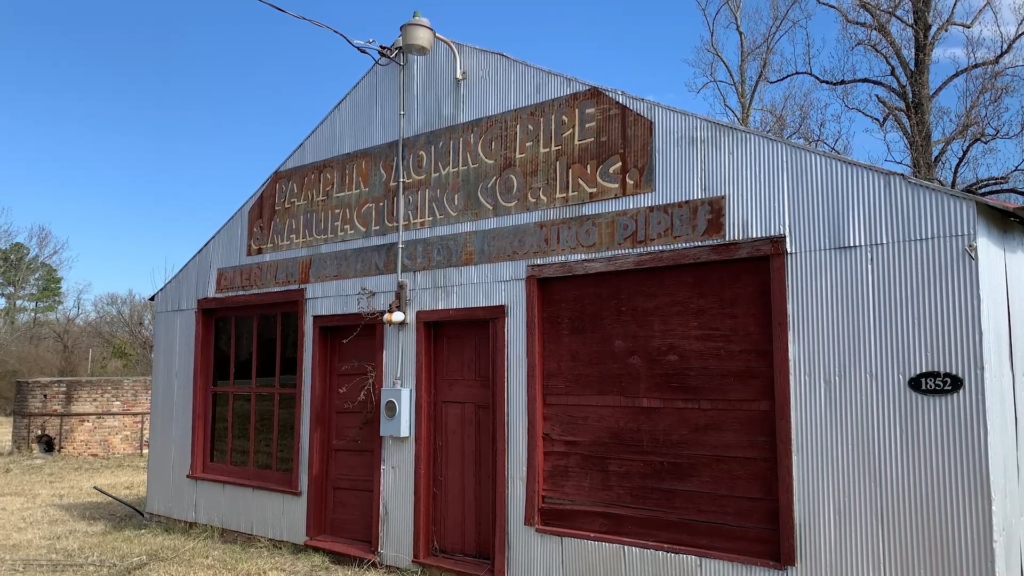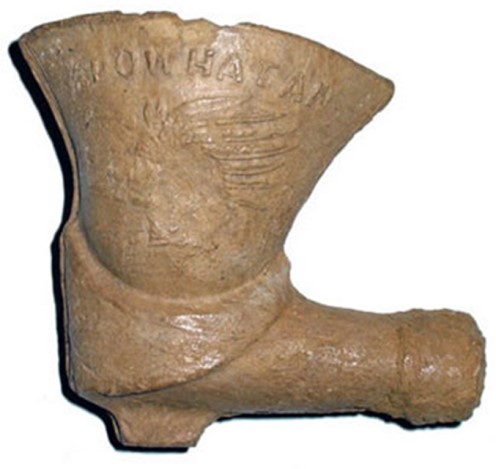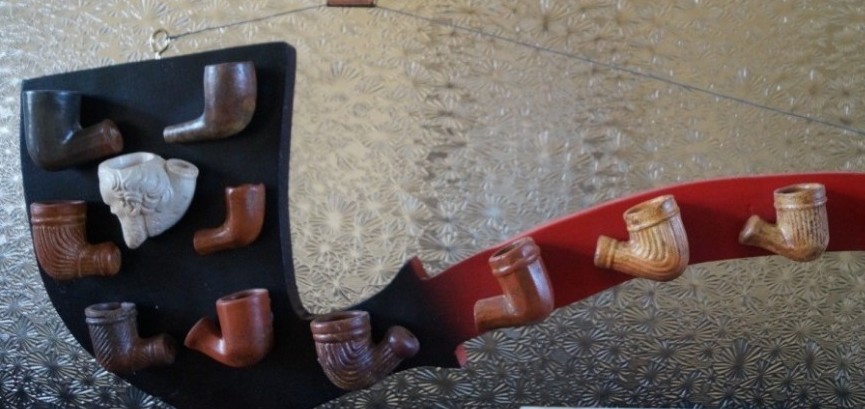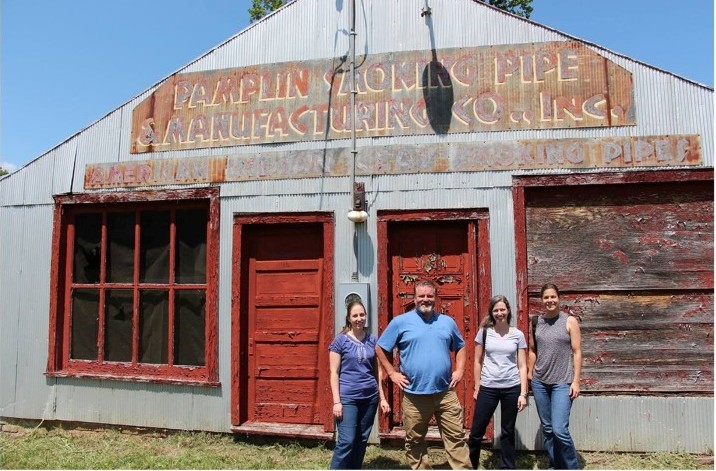In Central Virginia, near Appomattox, sits the small town of Pamplin, home to the Pamplin Pipe Factory Preserve, a Conservancy-owned preserve since 2010. The site contains the remains of, what was at one time, the largest production facility of clay tobacco pipes in the world.
In June of 2015, Conservancy staff conducted a tour of the preserve accompanied by Pamplin officials and Virginia archaeologists from Thomas Jefferson’s Monticello, and Washington and Lee University. Many clay pipes produced at the Pamplin Factory have been found on historic sites across the country, and this visit was an opportunity to discuss the growth of the pipe industry at one of the places where it began.
Pipe manufacturing began as a cottage industry in this part of Virginia as predominantly local women used the rich red clay deposits in the area to make and fire pipes in their homes and backyards. These were then sold to general stores or shipped to larger warehouses for distribution. By the mid-1800s a significant industry had developed, and prior to 1880 E.H. Merrill, a pipe company out of Akron, Ohio, established a pipe factory in Pamplin. The Merrill family was known for inventing a pipe-making machine that significantly sped-up the production process. It is likely that 8-10 of these were installed at the Pamplin factory.
Ownership of the factory changed over time and by 1935 the factory was claiming to be the largest producer of pipes in the world, with an output estimated at one million pipes per month. Some of these pipes were novelty or souvenir pipes modeled after historical figures such as General Robert E. Lee. One of the most popular was called a “Tomahawk pipe” in the rough bowl shape of a tomahawk which depicted George Washington on one side and an Indian wearing a headdress in a stereotypical “plains” style dress It could possibly represent Chief Powhatan, also called Wahunsenacah or Wahunsenacawh, father of Pocahontas although it is not actually how he would have looked or dressed. Chief Powhatan presided over the Powhatan empire at the time the English established the Jamestown Colony (1607). A version of this pipe was made for the 1933 Chicago World’s Fair.
Despite efforts to diversify production, including the addition of a sawmill operation, the increasing popularity of cigarettes made it impossible for the pipe factory to stay in business and it closed in 1952. Eventually the property was purchased by Raymond and Nancy Dickerson who worked to preserve this piece of Pamplin’s history. Mr. Dickerson ran a small museum in the factory and would give demonstrations on how the pipes were formed. He and Nancy successfully applied to have the site listed on the National Register of Historic Places. In 2007 the Archaeological Conservancy began to work with the Dickersons to acquire and permanently preserve the site. Since 2010 the property has been maintained as one of the Conservancy’s permanent archaeological research preserves.
Thank you to our visiting archaeologists—Beth Sawyer from Monticello, Donald Gaylord from Washington and Lee University, Brandy Joy from Monticello and the University of South Carolina, and Leslie Cooper from Monticello!
Read More:
- Pamplin Area Legacy Supporters Group
- Virginia Department of Historic Resources
- History of Ceramic Industry (PDF)
Other sites from the birth of the Industrial Revolution:
- Archaeology of Industry: F. Shaw & Brothers Tannery of Maine
- In Honor of Labor Day – A Look at Clinton’s Ditch & the Erie Canal
Learn more about the types of Pamplin Historic Pipes
More on the Study of Clay Pipes and History of Clay Pipes
More about Tobacco and Smoking in American Archaeology Magazine









